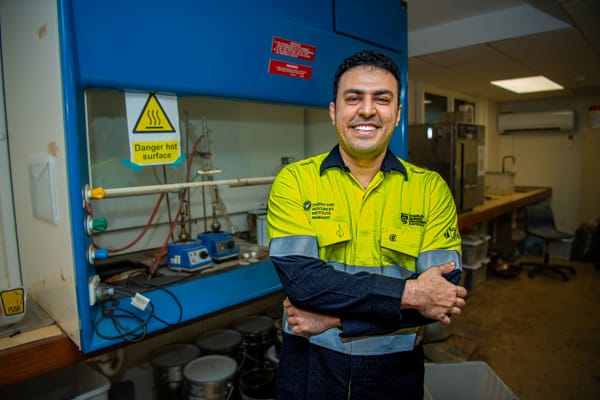Persistent poverty is a major policy issue
While having a job is often crucial to lifting people out of poverty, adequate income support and child care are also critical

First published by the University of Melbourne
By Dr Esperanza Vera-Toscano and Professor Roger Wilkins, University of Melbourne
We often hear that a job is the best way to get someone out of poverty, and in many cases, this is true. Anti-poverty strategies must prioritise improving people’s access to jobs.
But this isn’t the complete solution. For many people, particularly those with disability or substantial caring responsibilities that limit their scope to work, the income support system remains crucial to avoiding persistent poverty.

It may not feel like it at a time of rising living costs, but the incomes of Australians have on average risen substantially over the last three decades and continue to trend upwards – we have never been richer.
However – as highlighted by the Productivity Commission – some in the community continue to be left behind.
Our our new study, The Dynamics of Income Poverty in Australia, shows that persistent poverty remains a significant problem in Australian society. Looking back over the first two decades of this century, we found that around 13 per cent of the population are persistently poor.
We defined these as people who persistently have to live on incomes that are less than 60 per cent of the median income in Australia (a definition employed by Eurostat for European Union member countries).
Poverty then isn’t simply a temporary experience in Australia, and tackling persistent disadvantage needs to be a policy imperative.
Understanding what drives poverty and its persistence is an essential first step to alleviating it. Using data from the longitudinal Household, Income and Labour Dynamics in Australia (HILDA) Survey, we examined the extent and nature of persistent poverty among the same sample of Australians tracked over time.
Specifically, we looked at why people descend into poverty, why some people remain in poverty and others escape poverty, and why some of those who escape poverty remain out of poverty while others fall back into it.
We also examined the degree to which the depth of poverty – that is, how far someone’s income is below the poverty line – impacts on the likelihood of staying in poverty.

We found that persistent poverty is more prevalent among women, single-parent families, the elderly, Indigenous Australians, people with a disability, the less-educated and people living in more disadvantaged regions.
This is consistent with previous studies of poverty experienced at a single point in time.
Perhaps unsurprisingly, those in deep poverty – the poorest of the poor – are the most likely to be persistently poor (up to five times more likely than the average person in the community). The very poor are therefore a policy priority not only because they are very poor now, but because they are more likely to remain poor.
Similarly, among those initially not in poverty, those with incomes closest to the poverty line – the poorest of the non-poor – are at greater risk of falling into persistent poverty.
Another policy priority therefore needs to prevent those close to the poverty line from falling into actual poverty.
When we examined the ‘trigger events’ for people falling into poverty or rising out of it, we found that the household’s success in the labour market is critical. An increase in the number of employed people in the household is strongly associated with lifting people out of poverty.
There’s also a strong association between a lack of work and the risk of persistent poverty. Clearly, then, policy measures geared towards increasing employment and retaining employment for those already employed are key to reducing persistent poverty.
But employment isn’t the only factor of importance. Any change in family type, but particularly becoming a single-parent family, increases the risk of poverty.

More broadly, the household context plays a crucial role in determining a person’s poverty experiences. Who you live with, what they do, and what happens to them are important. The household perspective then is critical to understanding poverty and designing appropriate policy responses.
The onset of disability or substantial caring responsibilities are also strongly predictive of poverty entry and poverty persistence. Put simply, those who are more likely to experience persistent poverty tend to be constrained in their ability to participate in the labour market.
Focusing only on labour market-related anti-poverty policy measures isn’t enough to fully address persistent poverty in the Australian community.
Many of those highly exposed to persistent poverty have very constrained access to paid work – either because of their long-term health conditions or because they have high caring responsibilities for young children or people with significant disabilities.
Even among couple-parent households, we found that the more dependent children in the household, the lower the probability of exiting poverty. This highlights the importance of child care assistance to facilitate employment participation and sustained income adequacy for families with young children.
But even improvements in child care assistance aren’t enough.
The simple fact is that, for a significant number of people, income support will continue to determine their living standards.
The unavoidable conclusion is that boosting income support payments beyond their current austere levels remains a crucial pillar of policy for governments genuinely committed to reducing persistent disadvantage.
Unfortunately, this doesn’t appear to be on the agenda of either of the major parties.
The research for The Dynamics of Income Poverty in Australia, was supported by funding from the Paul Ramsay Foundation.
A version of this story appears in The Conversation.
Banner: Getty Images




